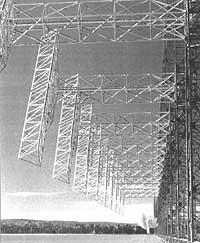The sound of snow
2000/02/01 Elhuyar Zientzia Iturria: Elhuyar aldizkaria
Nobody would think that, but it seems that snowflakes, so silent to our ears, emit more noise than raindrops or ice cubes when they fall into the water. For 50 years researchers have been measuring the underwater sound of rain, as the sound emitted by drops interferes with sonars and radars.
And in one of those investigations something unexpected was discovered: light snowflakes sound more than anything else when they fall into the water. A snowflake can form waves with a frequency of 200 kilohertz, frequencies too high for the human ear. The sound was initially considered as the result of the copo fusion process, but later it has been seen that the sound comes from the release of the air bubbles that the copo has trapped inside. When the snowflake perched on the surface of the water sinks and begins to melt, the air bubbles released suddenly burst to vibrate to adapt to the new situation and the vibrations provoke the waves mentioned.

Gai honi buruzko eduki gehiago
Elhuyarrek garatutako teknologia




